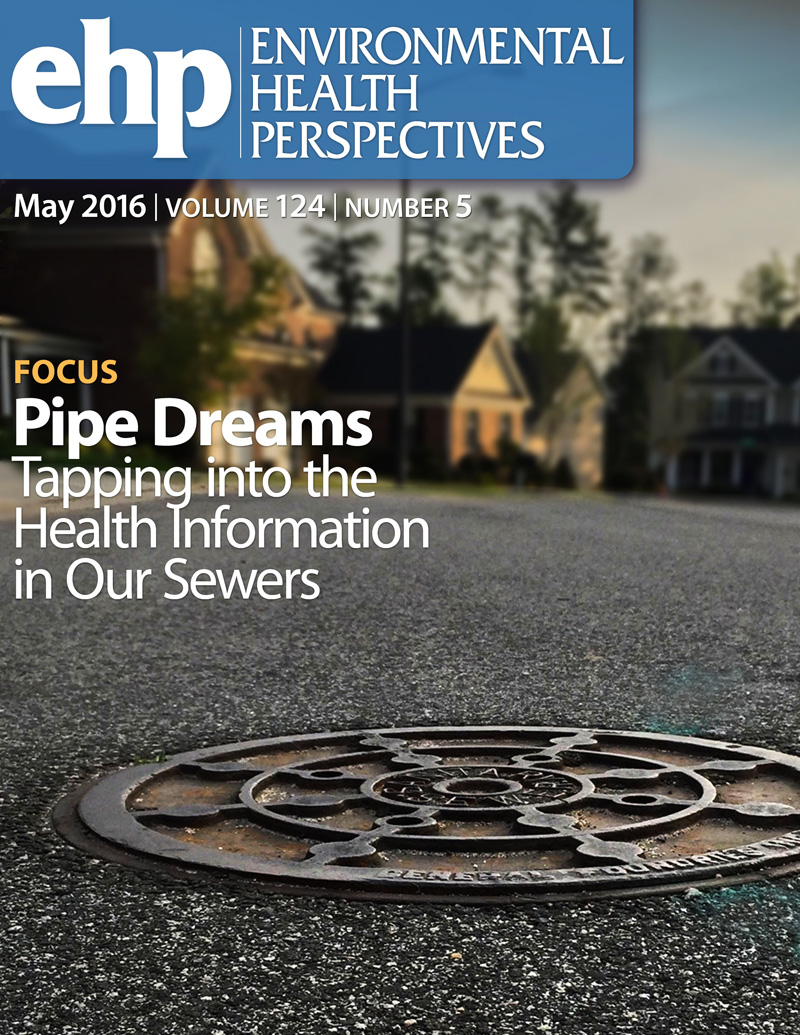异位子宫内膜组织中的全氟和多氟烷基物质与子宫内膜异位症的风险:来自调查污染物混合物和组织(植入)子宫内膜异位症的研究结果。
IF 9.8
1区 环境科学与生态学
Q1 ENVIRONMENTAL SCIENCES
引用次数: 0
摘要
背景全氟和多氟烷基物质(PFAS)的暴露非常普遍,而且与妇科疾病有关。方法从因任何原因接受腹腔镜检查或开腹手术(2007-2009 年)的 "组织中污染物混合物和子宫内膜异位症调查(IMPLANT)研究 "参与者处收集异位子宫内膜组织标本(n=434)。采用高效液相色谱-串联质谱法检测了九种 PFAS(全氟癸酸 [PFDA]、全氟己烷磺酸 [PFHxS]、全氟壬酸 [PFNA]、全氟辛酸 [PFOA]、全氟辛烷磺酸 [PFHxS]、全氟壬酸 [PFNA]、全氟辛酸 [PFOA]、全氟辛烷磺酸 [PFOA]、全氟辛烷磺酸 [PFOA])、全氟辛烷磺酸[PFOS]、全氟十二烷酸[PFDoDA]、全氟庚酸[PFHpA]、全氟辛烷磺酰胺[PFOSA]和全氟十一烷酸[PFUnDA]。外科医生通过金标准可视化诊断子宫内膜异位症,并根据美国生殖医学会(ASRM)的分类,将子宫内膜异位症分期为中度和重度(3-4期)与轻度(1-2期)。我们使用修正的泊松回归模型,对年龄(连续性)、种族(白人、所有其他种族/族裔)、吸烟状况(血清可替宁>纳克/毫升)、研究地点(犹他州、加利福尼亚州)和体重指数(连续性)进行调整,得出每种 PFAS 的子宫内膜异位症诊断相对风险系数 (RR) 和 95% 置信区间 (CI)。结果参与者平均年龄为 33 ± 7 岁,75% 的参与者为非西班牙裔白人。在181名确诊为子宫内膜异位症的参与者中,73%为ASRM 1-2期,27%为3-4期。异位子宫内膜组织中 PFOS、PFOA、PFHxS、PFNA 和 PFOSA 的中位数(IQR)分别为 6.58(6.44)纳克/克、1.93(1.71)纳克/克、0.65(0.75)纳克/克、0.58(0.52)纳克/克和 0.12(0.18)纳克/克。子宫内膜组织中的 PFAS 与子宫内膜异位症无关。然而,异位组织中的某些 PFAS 与更晚期(3 或 4 期与 1 或 2 期)子宫内膜异位症的风险有关[(PFOSA RR=1.25 (95% CI: 1.10-1.43),PFHxS RR=1.37 (95% CI: 1.12, 1.68),PFOS RR=1.36 (95% CI: 1.02, 1.81)]。没有证据表明子宫内膜组织中的 PFAS 与诊断为子宫内膜异位症的较高风险有关。但是,子宫内膜组织中的全氟辛烷磺酸、全氟辛烷磺酸和全氟己烷磺酸与子宫内膜异位症更严重阶段的风险有关。https://doi.org/10.1289/EHP15852。本文章由计算机程序翻译,如有差异,请以英文原文为准。
Per- and polyfluoroalkyl substances in eutopic endometrium tissue and risk of endometriosis: findings from the Investigating Mixtures of Pollutants and Endometriosis in Tissue (IMPLANT) Study.
BACKGROUND
Per- and polyfluoroalkyl substances (PFAS) exposure is widespread and has been linked with gynecologic disease. To our knowledge, no study has measured PFAS in endometrial tissue.
METHODS
Eutopic endometrial tissue specimens (n=434) were collected from Investigating Mixtures of Pollutants and Endometriosis in Tissue (IMPLANT) Study participants undergoing laparoscopy or laparotomy for any indication (2007-2009). Nine PFAS were measured by HPLC-tandem MS (perfluorodecanoic acid [PFDA], perfluorohexane sulfonic acid [PFHxS], perfluorononanoic acid [PFNA], perfluorooctanoic acid [PFOA], perfluorooctane sulfonic acid [PFOS], perfluorododecanoic acid [PFDoDA], perfluoroheptanoic acid [PFHpA], perfluorooctanesulfonamide [PFOSA], and perfluoroundecanoic acid [PFUnDA]. Surgeons diagnosed endometriosis by gold-standard visualization and evaluated the endometriosis staging as moderate and severe (stage 3-4) compared to minimal and mild (stage 1-2), using American Society of Reproductive Medicine (ASRM) classification. We used modified Poisson regression models adjusted for age (continuous), race (white, all other race/ethnicities), smoking status (serum cotinine > ng/mL), study site (Utah, California), and body mass index (continuous) to obtain relative risks (RR) of endometriosis diagnosis and 95% confidence intervals (CI) for each PFAS. PFAS mixtures were evaluated using Bayesian Kernel Machine Regression.
RESULTS
Participants were, on average, 33 ± 7 years old, and 75% of participants were non-Hispanic white. Of the 181 participants with an incident endometriosis diagnosis, 73% had ASRM stage 1-2, while 27% had stage 3-4. Median (IQR) eutopic endometrium tissue levels, in ng/g, were 6.58 (6.44) for PFOS, 1.93 (1.71) for PFOA, 0.65 (0.75) for PFHxS, 0.58 (0.52) for PFNA, 0.12 (0.18) for PFOSA. PFAS in the endometrial tissue was not associated with endometriosis. However, select PFAS in the eutopic tissue were associated with a risk of more advanced (stage 3 or 4 vs. 1 or 2) endometriosis [(PFOSA RR=1.25 (95% CI: 1.10-1.43), PFHxS RR=1.37 (95% CI: 1.12, 1.68), PFOS RR=1.36 (95% CI: 1.02, 1.81)].
CONCLUSION
PFAS were widely detected in eutopic endometrial tissue. There was no evidence that PFAS in endometrial tissue were associated with a higher risk of endometriosis diagnosis. However, PFOS, PFOSA and PFHxS in the endometrial tissue were associated with risk of more severe stage of endometriosis. https://doi.org/10.1289/EHP15852.
求助全文
通过发布文献求助,成功后即可免费获取论文全文。
去求助
来源期刊

Environmental Health Perspectives
环境科学-公共卫生、环境卫生与职业卫生
CiteScore
14.40
自引率
2.90%
发文量
388
审稿时长
6 months
期刊介绍:
Environmental Health Perspectives (EHP) is a monthly peer-reviewed journal supported by the National Institute of Environmental Health Sciences, part of the National Institutes of Health under the U.S. Department of Health and Human Services. Its mission is to facilitate discussions on the connections between the environment and human health by publishing top-notch research and news. EHP ranks third in Public, Environmental, and Occupational Health, fourth in Toxicology, and fifth in Environmental Sciences.
 求助内容:
求助内容: 应助结果提醒方式:
应助结果提醒方式:


